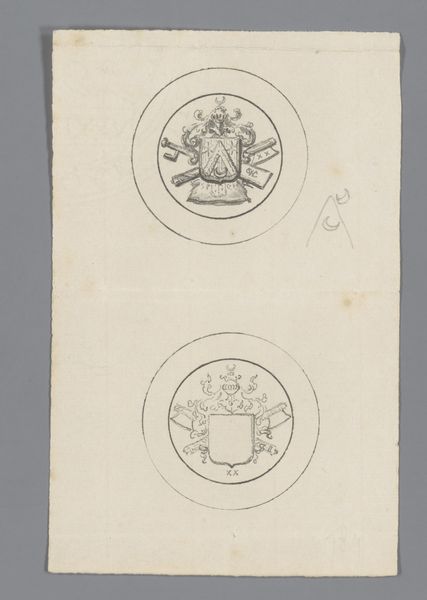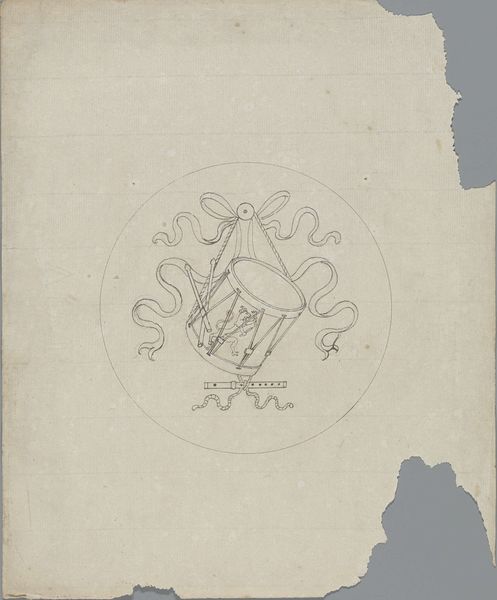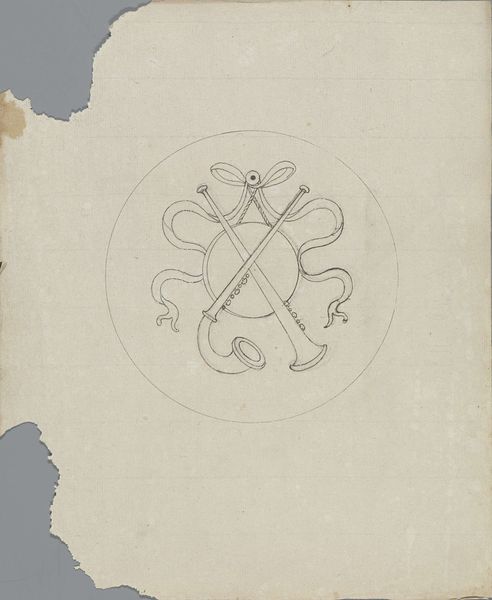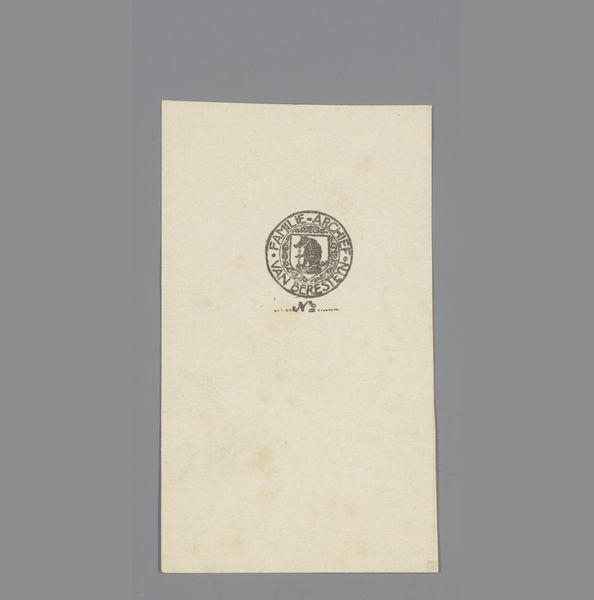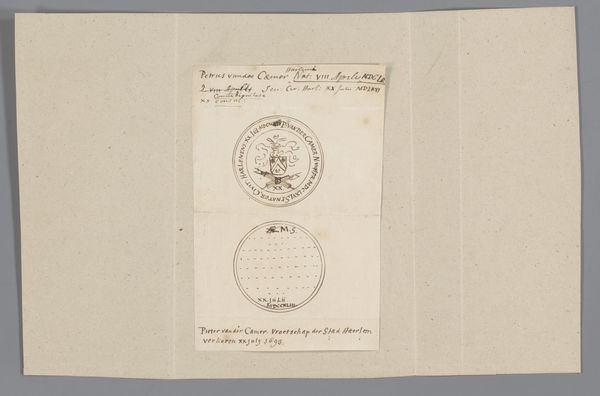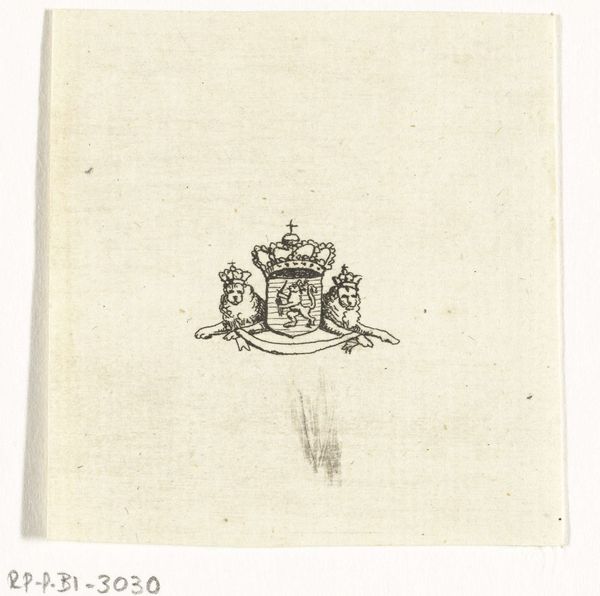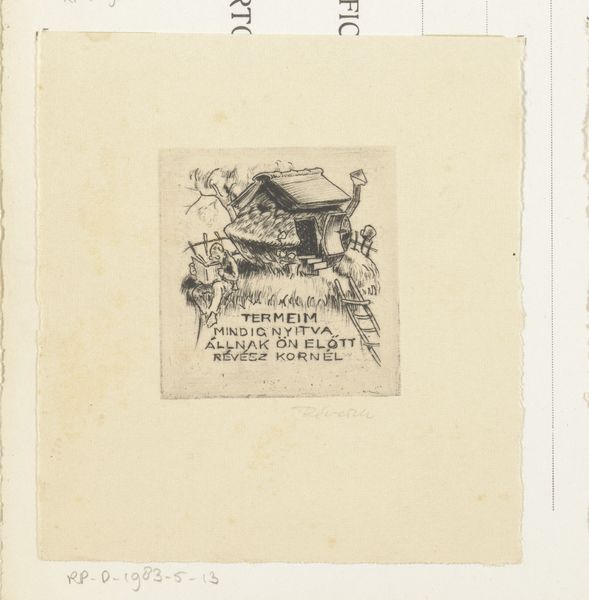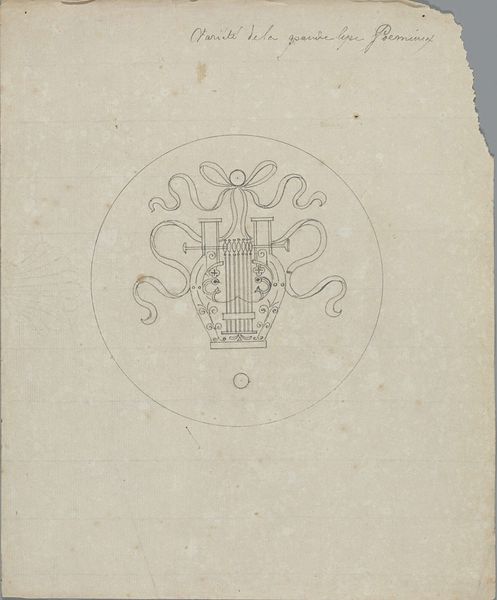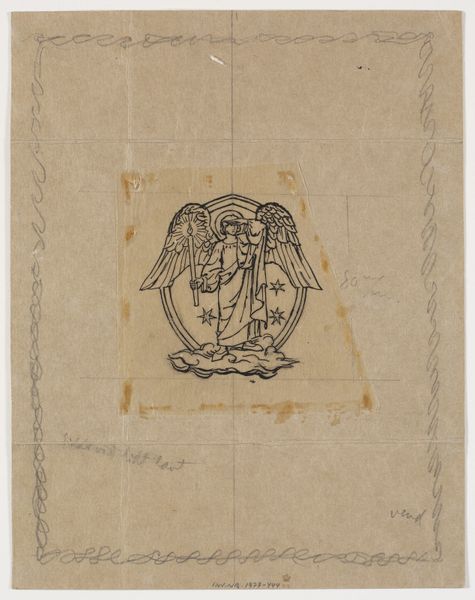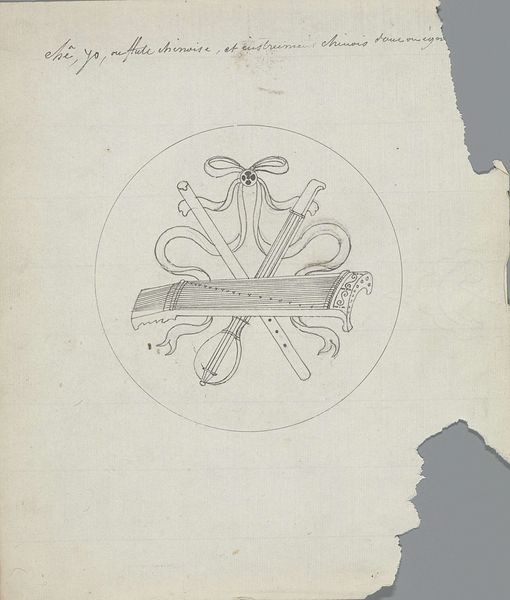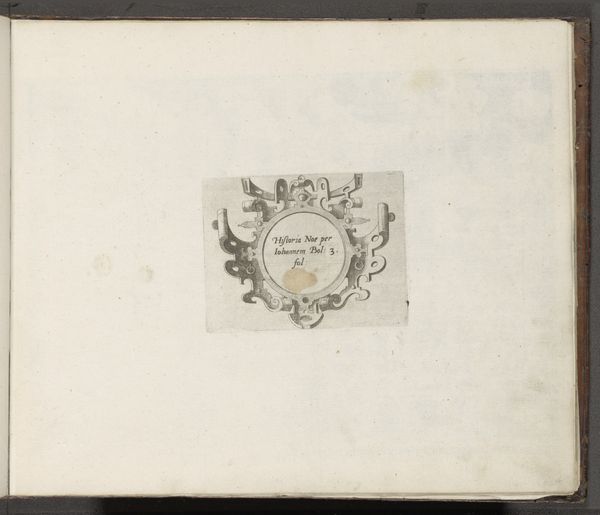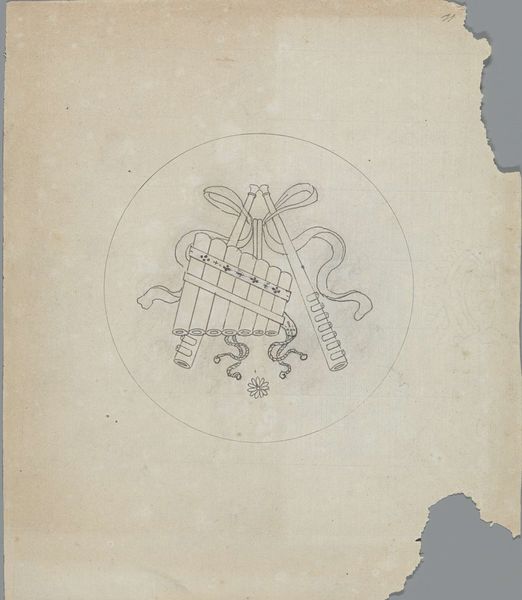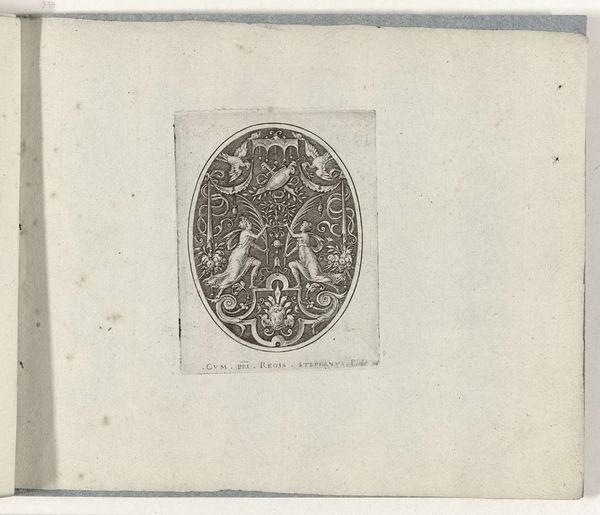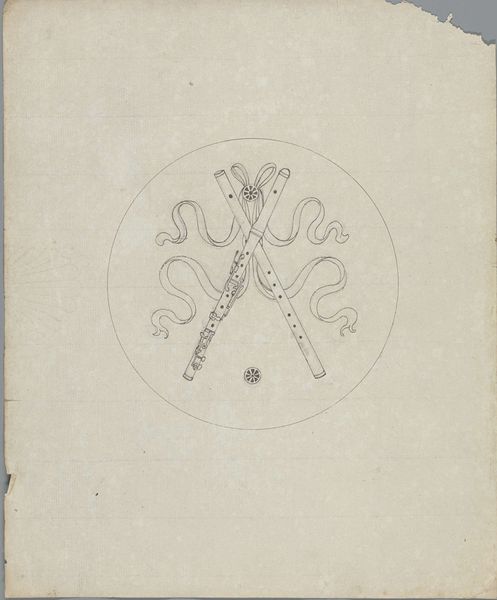
Ontwerp voor een historiepenning voor raad, schepen en oud-burgemeester van Haarlem Pieter van der Camer 1743
0:00
0:00
#
aged paper
#
homemade paper
#
paper non-digital material
#
sketch book
#
personal journal design
#
personal sketchbook
#
sketchbook drawing
#
storyboard and sketchbook work
#
sketchbook art
#
design on paper
Dimensions: height 101 mm, width 101 mm
Copyright: Rijks Museum: Open Domain
Curator: This delicate sketch, dated 1743, presents a design for a historical medal dedicated to Haarlem council, aldermen, and former mayor Pieter van der Camer. The artist remains anonymous. Editor: It’s surprisingly stark. The grey lines on the aged paper create an atmosphere of solemn formality, even though it’s just a design. I am interested in the marks and materiality of this work as process more than as "Art." Curator: Precisely. This isn’t the finished medal but an intimate glimpse into the planning stages. Consider the symbolic weight: crossed axes signify authority, framing a heraldic crest, probably representing Van der Camer’s family. It speaks of lineage and power, visualized for public commemoration. Editor: I am wondering how the medal production operated? The materiality is telling. You've got what appears to be laid paper, which would influence the fineness of line and the texture achieved. Was the metal locally sourced? I would be keen to know about the socio-economics of 18th century medal manufacture and distribution. Curator: Certainly. The choice of imagery connects directly to Van der Camer’s role in Haarlem's governance, a visual tribute designed to circulate amongst the elite. These medals served as material expressions of social cohesion and municipal pride. The axes could represent the power and the glory he had and could also allude to hard labor of common workers under him. Editor: But isn’t it all about idealization? A council presenting its version of history, of social order and it's all about showing this person from the place. And then to what effect and audience? In today's political climate of "public image", and "state power". Does much change. Curator: Well, this object reflects more than simple promotion. As design, it reveals the aesthetic values of its time. The sketch’s precision hints at an interest in classical motifs and idealized civic virtue, qualities that defined elite self-perception during the Enlightenment. Editor: Interesting indeed. But what kind of labor went into not only designing this image but creating the metal? Was this paper used only by those with money or did other more ordinary artisans get to draw, reflect, design and develop works from a common everyday experience of craft. That would interest me even more! Curator: Looking closely at the sketch reminds me that, historical records aren’t the only tools to help understand. We see layers of intentionality and skill; but we must recognize its intended political functions. The design represents carefully crafted imagery with socio-political messages. Editor: Right. The hand wrought paper gives clues about labor and circulation—offering a story about the visual messaging to specific groups. Materiality and design give voice to cultural conditions embedded within civic ritual. I like considering the value of how paper was distributed socially.
Comments
No comments
Be the first to comment and join the conversation on the ultimate creative platform.
